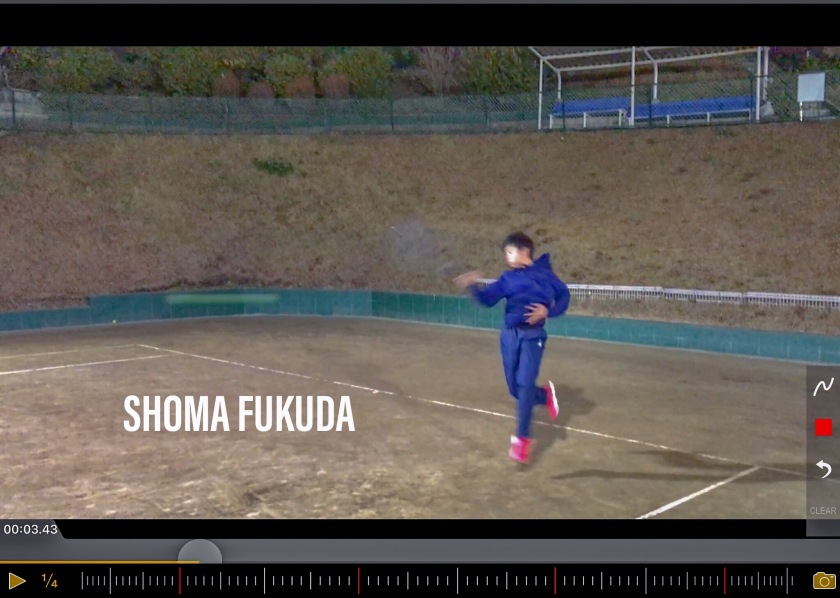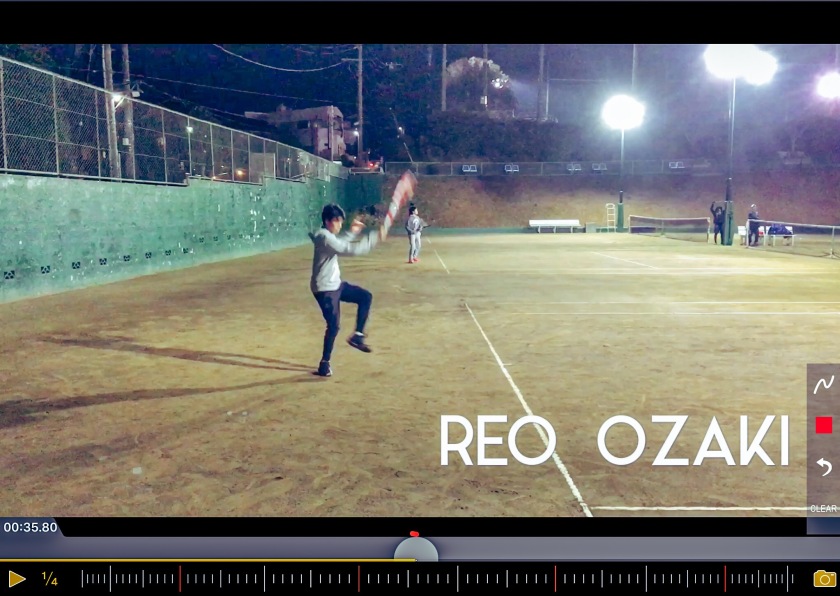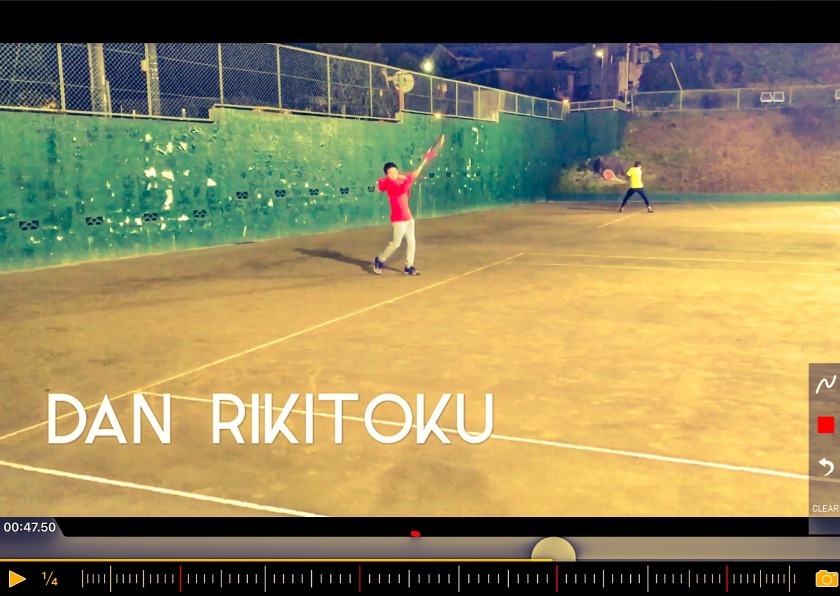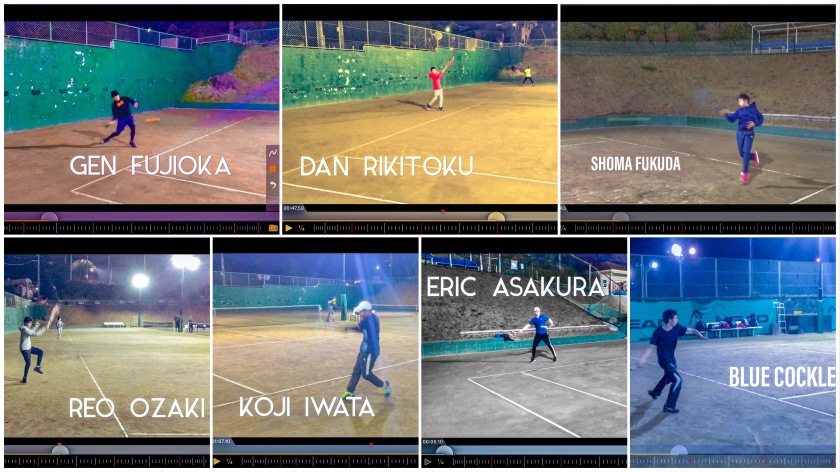Play smart tennis concept is based on the tennis as a heavy mind game.
When the players accept the fact that most of the time at the practice sessions and matches, their biggest opponent is their mind, they will change drastically their game.
 How many times it happened when you were praying not to make a double fault and you did, or when you were in a lead and changed your game style from “winning” to “can not lose” and you lost? These are just the simplest examples of how our mind is playing with us and if we can control OUR mind, we are facing drastic and rapid change in our game development.
How many times it happened when you were praying not to make a double fault and you did, or when you were in a lead and changed your game style from “winning” to “can not lose” and you lost? These are just the simplest examples of how our mind is playing with us and if we can control OUR mind, we are facing drastic and rapid change in our game development.
Remember: IT IS YOUR MIND and your mind very much influence how YOUR BODY acts.
 Understanding that the brain has the main role in creating effective stroke, faster improving or changing the current stroke, making the game itself faster by putting attention to the important cues and anticipating the shots will definitely influence the way the player should be seeing the game and the way the player should create the practice sessions (which should be definitely based on the real game point situations).
Understanding that the brain has the main role in creating effective stroke, faster improving or changing the current stroke, making the game itself faster by putting attention to the important cues and anticipating the shots will definitely influence the way the player should be seeing the game and the way the player should create the practice sessions (which should be definitely based on the real game point situations).
The key pillars of the PST concept are:
1. Understanding yourself and your personality (questions like “who am I?” and “what is my goal?” and being completely, brutally honest to yourself)
2. Creating the mind and body connection through understanding and practice (being aware why the stress, anxiety or choking happens and how the mind can influence the technique, strokes, attention, preparation and anticipation)
3. Creating your own psychological game (the ways to create and use the tactical-technical patterns and keep the confidence in your game always high)
4. Creating a WIN-WIN environment (relying on feelings of accomplishment rather on the feelings like winning or losing)
THE PILLAR NUMBER ONE: UNDERSTANDING YOURSELF AND YOUR PERSONALITY
1. Once you get to be aware of your strength and limitations by being fully honest to yourself, you can wholly create the technical tactical approach to your game.
 Nowadays the players are even ready to hit inside in forehands down the line from the backhand corners and win winners and that’s how much the game evolved. But these players are hitting these shots for one reason only: they are aware that their forehand is a winner stroke and backhand is not. Fair enough! All players should be brutally honest to themselves and about their game in order to progress.
Nowadays the players are even ready to hit inside in forehands down the line from the backhand corners and win winners and that’s how much the game evolved. But these players are hitting these shots for one reason only: they are aware that their forehand is a winner stroke and backhand is not. Fair enough! All players should be brutally honest to themselves and about their game in order to progress.
 The ones that have a wish to be better will definitely work on the strokes that they don’t have confidence in order to improve. This improvement usually leads into creating a stable rally stroke in which they have enough confidence to keep the rally cross court or change direction down the line without even thinking about winner shot but the shot that makes the opponent hit the ball while running. The intention is to be prepared to attack the opponents running stroke if it is returned short or displaced.
The ones that have a wish to be better will definitely work on the strokes that they don’t have confidence in order to improve. This improvement usually leads into creating a stable rally stroke in which they have enough confidence to keep the rally cross court or change direction down the line without even thinking about winner shot but the shot that makes the opponent hit the ball while running. The intention is to be prepared to attack the opponents running stroke if it is returned short or displaced.
 At the same time, players knowing their strength strokes will continue improving them adding more dimensions to it. By dimensions, the following can be practiced: different type of spin, strokes controlling depth and improving the positioning (footwork) to the ball. The intention is to create advantages with different types of the same strokes (changing pace and placement of the balls efficiently) and keeping the opponents away from their strength strokes or optimal contact zone.
At the same time, players knowing their strength strokes will continue improving them adding more dimensions to it. By dimensions, the following can be practiced: different type of spin, strokes controlling depth and improving the positioning (footwork) to the ball. The intention is to create advantages with different types of the same strokes (changing pace and placement of the balls efficiently) and keeping the opponents away from their strength strokes or optimal contact zone.
In case of physical limitations (especially during the junior years at the age of physical growth and development), players need to understand that their game plan against the physically stronger players shouldn’t be built around overpowering the opponents but around their own strengths. Or, as the win win situation would be, to accept that at that moment the opponent is better prepared (experience, strokes, physical development, etc) so they have nothing to lose. At this point, the match goal should be on hitting each stroke as they do at the practice being concentrated and relaxed so the points and match outcome should be something that would grow from this kind of approach.
2. For highest tennis performance, the players needs a personality that can tolerate the errors and frustration and stay on the path of the growing process of development.
 During this frustrating moments, the player should understand that the process is slow but the sense of growing and getting better step by step should bring final gratification. Players understanding their own personality, can control those frustrating moments in more constructive way.
During this frustrating moments, the player should understand that the process is slow but the sense of growing and getting better step by step should bring final gratification. Players understanding their own personality, can control those frustrating moments in more constructive way.
 As mention in previous blogs about the importance of understanding the personality, personality traits that are the most relevant for the successful training process and performance are: self esteem, perfectionism, fear of failure and need to control.
As mention in previous blogs about the importance of understanding the personality, personality traits that are the most relevant for the successful training process and performance are: self esteem, perfectionism, fear of failure and need to control.
Self esteem is an image athletes have about themselves, how do they perceive themselves and their place in their environment. Their actions and decisions can be largely influenced by the desire to see themselves worthy of the environment. As by that, the positive image will give them a boost of confidence but on the other hand, athletes with the negative image will be having problems to cope with the growing frustrations if their perceived efforts are not resulting in improved performance immediately.
Perfectionists are athletes that create high performance goals that could be sometimes unrealistic. Having unreachable goals and failing to accomplish those goals, athletes tend to devalue themselves and their abilities. Different sources of perfectionism can influence the athlete’s behavior and performance in a different way. Socially perfectionism emerge not from an internally desire to be truly best but from the fear of environment, as a fear of failure and a desire to avoid embarrassment, shame or guilt. On the other hand, self-oriented perfectionists may use their pleasure in their accomplishments as encouragement to continue and constantly improve their work.
Fear of failure is based on the concept of creating the fear of unwanted consequences of the performance such are failure or errors. Usually, the consequences are the negative reactions and criticism from the environment or the athlete itself. The essence of managing the failure is understanding what is the realistic perception of the failure and if the perception differs between the athletes and the environment.
Need to control comes from the athletes belief that gaining more control over environment lowers down the levels of instability and risk, which are the feelings athlete sense are needed for the general well being, healthy and productive environment and successful performance. Usually, feelings of losing the control are leading to lowering the levels of self esteem and higher levels of anxiety and these psychological conditions do influence an athlete’s physical readiness. The perception of complete control in athlete has an influence on many psychological parameters such are motivation, self confidence, arousal levels, concentration, emotions and the rate of recovery from the failures and errors. These parameters are drivers to the successful performance as they are highly influential to the levels of self confidence and trust to overcome the challenges, to understand how to overcome the pressure of the competition, and to respond in positive and acceptable manner to the potential failures along the whole process of training or competition.
NEXT BLOG:
THE PILLAR NUMBER TWO: CREATING THE MIND AND BODY CONNECTION

